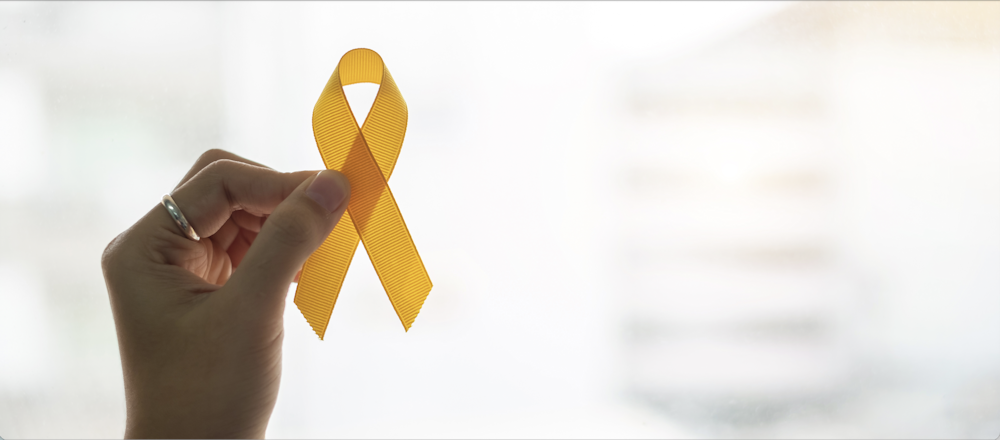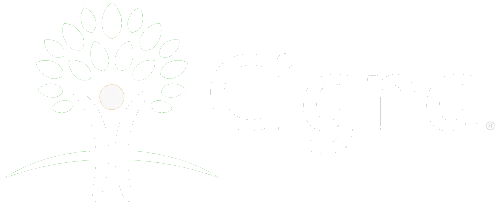The 10th of September each year is World Suicide Prevention Day. The purpose is to:
- Raise awareness
- Help make treatment more available
- Remember individuals affected by suicide
The theme for World Suicide Prevention Day from 2021 to 2023 has been “Creating Hope through Action.” This serves as a reminder that there is an alternative to suicide and intends to inspire confidence in everyone. By creating hope through action, we can show people experiencing suicidal thoughts that there is hope, we care, and we support them.
To honor the day, wear yellow on September 10th and post your picture. No matter how big or small, your actions may give hope to people who are struggling. We can all play a role in supporting people experiencing a suicidal crisis or individuals suffering a loss caused by suicide.
When Did World Suicide Prevention Day Begin?
Jump to Section
World Suicide Prevention Day (WSPD) was initiated in 2003 by the International Association for Suicide Prevention in combination with the World Health Organization (WHO). Since then, the 10th of September has put a spotlight on the issue, reduced stigma, and raised awareness among government and public organizations that suicide can be prevented.
Suicide Statistics
Suicide statistics are very discouraging and overwhelming. But, they also help us get a clearer picture of the problem at hand. Here are some important statistics you should be aware of:
- In 2021, more than 48,000 people died by suicide, leaving family and friends to deal with the tragedy of their loss.
- Suicide is the 11th leading cause of death among U.S. adults.
- It is the second leading cause of death among people aged 10-24.
- The age-adjusted rate in 2021 was 14.04 per 100,000 people
- According to the CDC, in 2020 rates of suicide were highest among male Native Americans, at 37.4% per 100,000.
- Suicides among middle-aged white men accounted for 69,68% of the suicide deaths for 2021. This is 3.90 times more than women
- Guns accounted for 54.64% of all suicide deaths.
- The use of guns is the #1 means of suicide, followed by suffocation and poisoning.
- 9% of males and 33% of females use guns, and 7.8% of males and 28.6% of females select poisoning.
- There were also approximately 1.70 million attempts at suicide.
- In 2020, the prevalence of serious suicidal thoughts was highest among young adults aged 18-25 at 11.3%
- LGBTQ youth are more than four times as likely to attempt suicide than other youth.
Suicide Risk Factors

There are a lot of factors that can contribute to suicide risk–it is very rarely caused by a single event or situation. The following 4 types of risk factors are problems or situations that may increase the possibility of an individual attempting suicide. The factors are:
Individual Risk Factors (personal factors that add to risk)
- Has attempted suicide previously
- A history of depression or another mental illness
- Suffering from a serious illness such as chronic pain or cancer
- Financial problems or loss of a job
- Personality has become aggressive or impulsive
- Struggling and in need of substance abuse treatment
- Current or prior history of childhood trauma
- Expressing feelings of hopelessness
- Victims of violence or committing violent acts
These individual risk factors can be addressed by helping at-risk people learn effective coping and problem-solving skills, having them consider their reasons for staying alive, and learning to appreciate their cultural identity.
Relationship Risk Factors (upsetting relationship experiences)
- Being bullied
- Family history of suicide
- Relationships lost
- Isolating from friends and family
These relationship factors can be mitigated through healthy relationships such as support from partners, family, and friends which will help provide a feeling of connection to others.
Community Risk Factors (problems inside the community)
- Difficulty accessing healthcare
- A group of suicides in the community
- Stress from “culture shock” adjustment
- Prevalence of violence in the community
- Bias and intolerance in the community
Supportive experiences can provide a connection to school, community, and other social groups. Easily accessible behavioral and physical healthcare can help address the possible causes of suicidal ideations.
Societal Risk Factors (environmental and cultural factors in society)
- Embarrassment and shame about getting help at a dual diagnosis treatment center
- Easy access to lethal methods of suicide
- Unsafe representations of suicide in the media
These societal factors can be eased through supportive community services such as providing easily available healthcare and a feeling of connection to the community, school, and other social institutions.
How You Can Help Prevent Suicide

The good news is that 94% of adults believe that suicide can be prevented. Here are some ways you may be able to help someone:
Don’t Be Hesitant to Speak Up and Start a Conversation if You’re Worried About Someone
Giving a suicidal person the opportunity to share their feelings can provide the relief they need. You could start the conversation simply by reminding them that you are concerned about them and asking if there’s something bothering them.
Respond Immediately if They Are Talking About Suicide
You need to determine if they’re in immediate danger. You can ask these questions to help you assess the risk.
- Do you have a suicide plan?
- Do you have the means to carry out your plan?
- Did you decide when to do it?
- Do you want to end your life?
Evaluating the Risk
Low-risk level
- Some thoughts of suicide
- Has not formed a plan
- Says they aren’t going to attempt suicide
Moderate risk-level
- Has suicidal thoughts
- Doesn’t have a definite plan
- Says they won’t attempt suicide
High-risk level
- Has suicidal thoughts
- Has made a definite plan
- Says they aren’t going to attempt suicide
Severe risk level
- Has suicidal thoughts
- Has made a definite plan
- Says they are going to attempt suicide
Provide Help and Support
Even though it’s challenging to your emotions, don’t personally take on the responsibility for making the person better. Give support, but realize that only the person can decide to get help and participate in treatment. You can offer support by:
- Helping them find professional help
- Encouraging them to go to treatment
- Calling and visiting without waiting for them to ask
- Promoting lifestyle changes that will have a positive effect such as a healthy diet and going outdoors
Make a safety plan by helping them recognize triggers and following the steps that are the most helpful. Make sure you include numbers for the following:
- The therapist (if applicable)
- Crisis center
- Suicide prevention hotline
- Any contacts that may be able to help in an emergency
- Continue to support the person for the long haul
Get Suicide Prevention Training
- The online Counseling on Access to Lethal Means (CALMS) offers a course that is free of charge at Zero Suicide Training.
- Similarly, the Suicide Prevention Resource Center (SPRC Training) also provides in-person training and online courses, webinars, and other virtual learning. Online courses are open to everyone and free.
- Suicide Awareness Voices of Education (SAVE) provides valuable tools to community leaders to help prevent suicide.
Stay Involved in Suicide Prevention for the Long Term
Although the focus is on raising awareness, it’s still easy to join in to support others in your community who have been touched by suicide. But that support is needed all year whether you’re directly helping someone in need or not.
How to Stay Involved Beyond September 10
Share
Share what you’ve learned about suicide prevention and suicide on social media and with other people in person. This will help reduce the stigma many experience around the issue.
Keep Talking
Keep the conversation going with family and friends about the need for increased awareness and support.
Donate
Give time and/or money to agencies that work to provide services and support for people who need it.
Advocate
Become an advocate for:
- Funding for research for suicide prevention counseling
- Stricter firearms laws
- More accessible healthcare
- Mobile crisis services as an alternative to law enforcement
Learn the Early Warning Signs
It’s essential for everyone to be aware of some early warning signs as a first step in suicide prevention. Always take them seriously.
- They always talk about suicide
- They look for ways to get pills, guns, knives, etc.
- They have a preoccupation with death
- They have unexpected mood swings or personality changes
- They exhibit signs of hating themself
- They neglect their appearance
- They appear to feel hopeless
- There are changes to their eating and sleeping habits
- They say goodbye to people they’re close to
- They isolate from others
- They demonstrate self-destructive behaviors
Free by the Sea Can Assist with Suicide Prevention Counseling

World Suicide Prevention Day is a good way to start the conversation, but it shouldn’t also be the end. Individuals struggling with suicidal thoughts need professional help. Free by the Sea has licensed, experienced therapists who can help you or someone you care about find peace in their life. It doesn’t have to be a struggle.
Because we treat many types of substance use disorders, we are well aware of the connection between addiction, mental illnesses, and suicidal thoughts. We also know that people are concerned about the stigma of mental illness. Everything at Free by the Sea is completely confidential. However, you will learn not to feel shame or embarrassment. We will be happy to check your insurance coverage or help you find other ways to finance treatment.
Don’t wait. No one should wish their life away. There is hope at Free by the Sea. Contact us today. We want to talk to you about your future.

Dr. Richard Crabbe joined our team in 2019 as our psychiatrist and medical director. He attended the University of Ghana Medical School where he became a Medical Doctor in 1977. From 1978 through 1984, he was a medical officer in the Ghana Navy and provided a variety of services from general medicine to surgeries. He received his Certificate in General Psychology from the American Board of Psychology and Neurology in 2002.

 September 5th, 2023
September 5th, 2023










